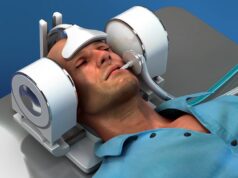 Brainomix and Nanoflex Robotics have announced today that they have been awarded a grant via the ‘UK—Switzerland Bilateral: Collaborative R&D [research and development]’ programme, under which the companies will work together to jointly develop an integrated remote diagnosis and treatment platform for stroke, powered by artificial intelligence (AI).
Brainomix and Nanoflex Robotics have announced today that they have been awarded a grant via the ‘UK—Switzerland Bilateral: Collaborative R&D [research and development]’ programme, under which the companies will work together to jointly develop an integrated remote diagnosis and treatment platform for stroke, powered by artificial intelligence (AI).
The grant, administered by Innovate UK and Innosuisse—the respective innovation agencies of the UK and Switzerland—has awarded Brainomix £400,000 and Nanoflex CHF400,000.
Starting in 2024, the two companies will collaborate to create an AI-assisted magnetic navigation system for robotic surgical tools. The project will leverage Brainomix’s AI-enabled diagnostic imaging capabilities and Nanoflex’s precise magnetic navigation technology to create an assisted-navigation feature for interventional devices, such as catheters, as they move through the vascular network of a patient.
“We are grateful for the support of Innovate UK to fund our work with Nanoflex Robotics,” said George Harston, chief medical and innovation officer at Brainomix. “The project aims to leverage the power of artificial intelligence to enhance Nanoflex Robotics’ cutting-edge magnetic robotic navigation system to be the first system worldwide to enable remote thrombectomy, thus transforming stroke treatment options and helping improve outcomes for patients.“
“Time is critical when it comes to treating stroke patients,” added Christophe Chautems, chief technology officer at Nanoflex. “Every delay in removing a blood clot reduces the chance of post-stroke functional independence. By enabling increased and earlier access to mechanical thrombectomies through our remote robotics platform, we hope to give more people a greater chance to live independent lives after stroke.”
Nanoflex’s first product will be a mobile robotics system that utilises ultra-flexible guidewires to allow for direct steering of the tip. This gives physicians precise control and dexterity over a range of complex interventions.










